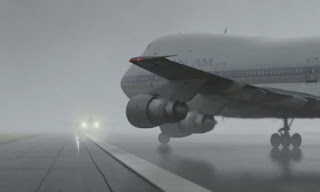Human Factors Challenges
Human Factors and Crew Resource Management (CRM)
Nowadays,
Approximately 80 percent of airplane accidents are due to human error (pilots,
air traffic controllers, mechanics, etc.), and 20 percent are machine
(equipment) failures. (Rankin, 2008).
Pilots use several technics to reduce pilot-related
errors and minimize any risks that may cause an abnormal operation or an
accident. CRM (Crew Resource Management) is a set of procedures based on the
effective use of all the available resources: human resources, hardware, and
information. CRM consists of different concepts that help the pilots to perform
better risk management process (RM), Aeronautical Decision making (ADM),
Situational Awareness (SA), Automation Management (AM), Task and team
Management (TM), and Control Flight Into Terrain Awareness (CFIT).
The Tenerife airport disaster in 1977, when
two Boeing 747 collided on the runway, resulted in the death of 583 people,
highlighting the need for better-organized procedures and standard procedures.
After the crash, the significance of reviewing the standards of cockpit
communication and phraseology brought the entire aviation industry to establish
the CRM as a critical phase in airline pilot training to prevent future
accidents and avoid potential human errors.
KLM
4805 and Pan Am 1736 lining up on a collision course
References:
Sánchez-Alarcos, J. (2020). Aviation and
human factors : how to incorporate human
factors into the
field. Boca Raton, Florida ; CRC Press. Retrieved From: https://ebookcentral-proquest-com.ezproxy.libproxy.db.erau.edu/lib/erau/reader.action?docID=5793708
Rankin, W. (2007). MEdA
investigation process. Boeing Commercial Aero. Retrieved From: https://www.boeing.com/commercial/aeromagazine/articles/qtr_2_07/AERO_Q207_article3.pdf
U.S. Department of
Transportation, Federal Aviation Administration. (2016). Pilot's handbook of
aeronautical knowledge. Washington, D.C. Retrieved From:
https://www.faa.gov/regulations_policies/handbooks_manuals/aviation/phak/media/pilot_handbook.pdf
Kanki,
B., Helmreich, R., & Anca, J. (2010). Crew resource
management (Second edition.). Amsterdam ;: Academic Press/Elsevier.
Retrieved From: https://ebookcentral-proquest-com.ezproxy.libproxy.db.erau.edu/lib/erau/reader.action?docID=534870






תגובות
הוסף רשומת תגובה